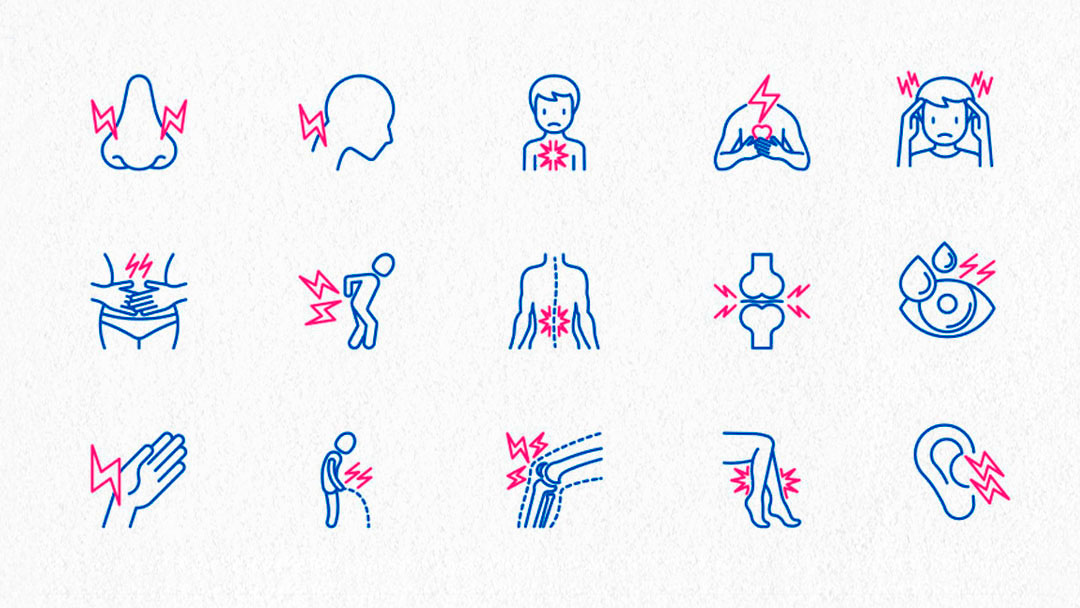Feeling pain is a natural reaction and an important warning sign of injury or illness. Finding its cause is important when it’s intense or long term, to get relief from pain or manage its impact.
Pain helps to protect us from actions or illnesses that can seriously damage us. It happens when receptors (chemicals) signal the brain that something is wrong.
Clearly, experiencing some degree of acute pain (temporary) is normal. However, for millions of people in the UK, pain is frequent, prolonged or at a level that makes everyday life challenging. Between one third and half of the people in the UK report suffering from chronic pain.
When is pain not ‘normal’?
Measuring, describing and locating pain can be tricky. The words associated with pain include sharp, stabbing, aching, constant, throbbing and dull.
Also, pain thresholds and tolerance levels can vary. What one person describes as ‘discomfort’ could be agonising pain for someone else!
This is why health professionals sometimes use visual aids and sliding scales to assess a patient feeling pain. Also, medical staff look for physical clues (especially in children or the elderly), such as lack of mobility, distress, fatigue or nausea.
Types of pain
Some forms of pain are categorised as neuropathic. This relates to damage or illness in your nervous system. Sciatic pain falls in this category.
Pain, both acute and chronic, can also be musculoskeletal (related to your muscles and bones). Such as an injury, a serious sprain (such as spinal issues that create back pain), or an illness such as arthritis or cancer.
Other types of pain are inflammatory – when body tissues swell in response to injury or illness – and you can also have non-specific pain which is hard to pin down.
Should I see my doctor about pain?
Chronic pain affects your ability to work, enjoy healthy relationships, sleep properly and exercise, so asking a medical professional to diagnose pain, and suggest the best pain relief, is vital.
It’s also a way of checking if your pain is due to an undiagnosed medical problem or a progression of a known one.
Doctors use various methods to diagnose the cause of pain. Including questions about your lifestyle and daily habits. That’s because weight, smoking, activity levels and your job can cause or worsen pain. Even stress or things like high blood pressure can have an effect.
When a physical injury is ruled out, your doctor will find clues to the cause of your pain from its location. This is especially true of the most common types of chronic pain such as back and neck pain, sciatica and migraines.
Treatment options include types of painkillers and anti-inflammatory medicines for pain relief, and recommendations for pain management devices. GPs can also suggest lifestyle changes for prevention, to stop pain, reduce it or manage its impact.
There are also psychological interventions that can help people better manage their daily pain.
Read on below for more information on two forms of body pain and contact Oval Medical Centre to discuss pain diagnosis and relief with one of our multilingual private doctors in London.



